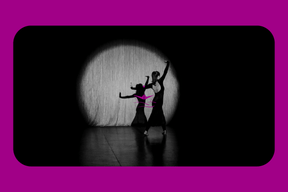Do We Lose Ourselves in Dance, or Do We Find Ourselves?
Dance, as a form of entertainment, often appears to be the product of social events like parties, weddings, or concerts. It is seen as a way to release stress—stomping, celebrating, swaying, and letting go. The experience of losing oneself in the music, whether aided by external factors or not, is undoubtedly enjoyable. Humans need these moments of release, of losing themselves in music, and of soothing the unexpected impulses that arise in such moments through movement.
However, if we only use dance as a means of losing ourselves, it becomes only little more than a drug.
As I have mentioned in previous writings, the belief that dance exists solely for pleasure is quite common yet misleading. It reflects humanity’s constant pursuit of happiness and our tendency to view things one-sidedly. When we use dance merely for the purposes of feeling happy, growing, showcasing ourselves, looking good, gaining approval, or keeping up with the music, we fail to deepen our connection with ourselves. We remain distracted by superficiality.
From a distance, everyone who sees a good dancer or a captivating dance performance thinks of how amazing it looks. It’s often assumed that it’s all about talent—and yes, to some extent it is—but just like in every aspect of life, it requires discipline and effort to refine that talent. A dancer who focuses solely on having fun or performing for videos cannot truly access themselves; they become trapped in an image. When we try to dance by watching ourselves through our own eyes, we lose our perception of three-dimensionality, reducing the body to two dimensions. It is only when the body opens up to its three dimensions—and even to its "multi-dimensionality" beyond that—that we can truly grasp what dance is.
Playing music and moving in sync with it, allowing the body to flow within the rhythm, is also a form of dance. But when we take full responsibility for our body, when we start the movement slowly and with intention, it is then that the miracle of what we call body wisdom begins to reveal itself. If we rush into excitement or try to "dance beautifully" by losing ourselves and expressing our emotions too forcefully, we fall prey to the disconnect between our body, soul, and mind: emotions take the lead, and when emotions overpower the senses, they disrupt the body’s harmony.
Alternatively, we may face the risk of long-term harm (whether physical or emotional). In dance, emotions and senses must go hand in hand. If we always let emotions take the lead, we might disconnect from our body and lose ourselves.
Yes, we may lose ourselves in dance, but finding ourselves completely is not something possible on this Earth. Dance is a constant process of losing and finding oneself, of losing and rediscovering again. Dance becomes real when we gain the ability to recognize these moments, to choose how we transition between them. When, with the accompaniment of our senses, we can feel both our inner and outer worlds through movement, emotions will naturally find their own way to express and flow—safely, without being thrown around.
Not by losing control, but also not by maintaining rigid control. With mastery, with awareness. With the clarity and courage to fully experience them and then let them go. As the dance itself. Not by losing oneself, but by repeatedly finding oneself within the dance.


